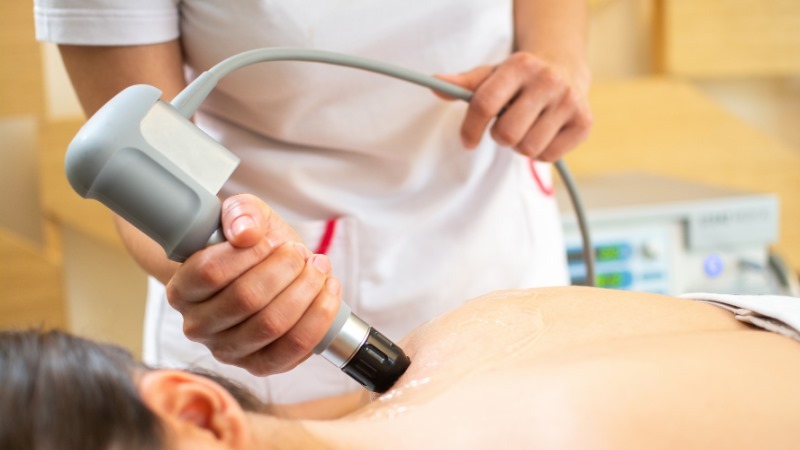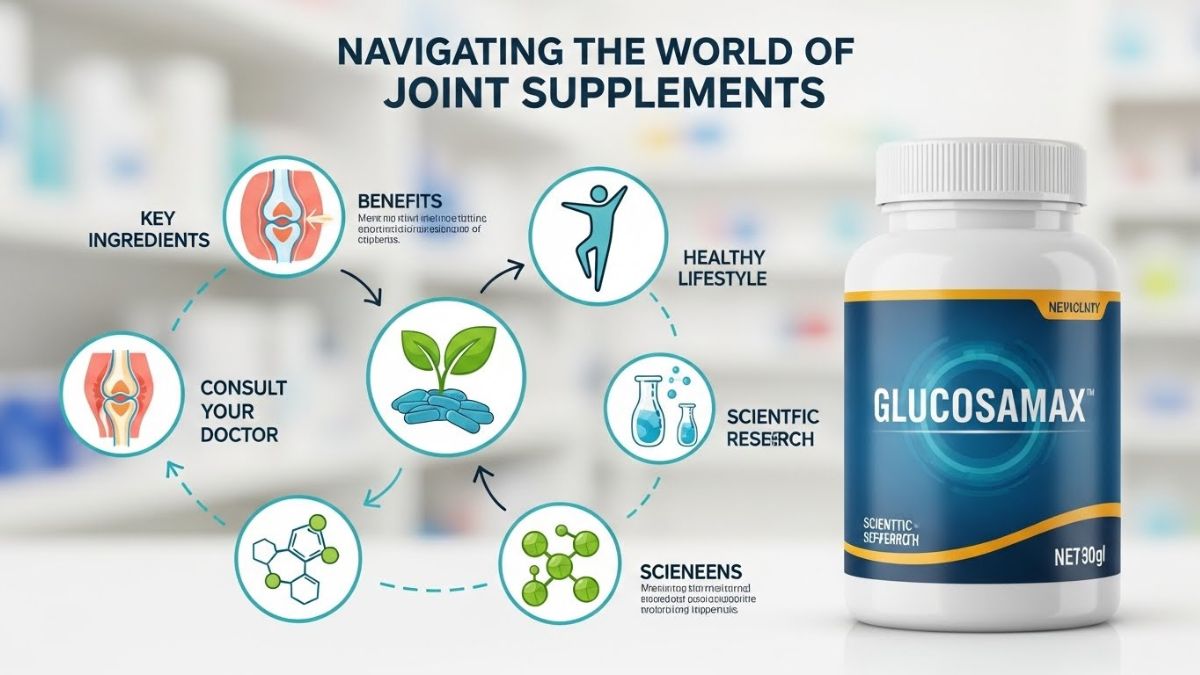HEALTH
EPAT Treatment: Innovative Solution for Pain Relief

Extracorporeal Pulse Activation Therapy (EPAT) is changing the way pain is treated. This FDA-approved, non-invasive therapy uses acoustic pressure waves to alleviate pain and promote healing in various musculoskeletal conditions. Whether it’s heel pain from plantar fasciitis, knee pain, or troubles with tendons and soft tissues, EPAT is proving to be a breakthrough treatment.
EPAT treatment is a quick and effective option that doesn’t require surgery. Each session usually lasts around 15 minutes and is repeated once a week for three weeks. Patients experience minimal downtime and can expect swift recovery, making EPAT an attractive alternative for those looking to avoid more invasive procedures.
Many people with conditions like plantar fasciitis and chronic tendon issues can benefit from EPAT Treatment.
Understanding EPAT Treatment
Extracorporeal Pulse Activation Therapy (EPAT) is a modern, noninvasive treatment that uses sound waves to alleviate various types of pain. Focusing on specific conditions offers new hope for those suffering from these ailments.
What Is EPAT Treatment?
EPAT stands for Extracorporeal Pulse Activation Therapy. It uses sound waves to target and treat muscle and tendon pain. The process involves sending pulses of sound waves into the affected area. This promotes blood flow and speeds up the healing process.
Developed initially in Europe, EPAT has gained popularity worldwide. The treatment is FDA-approved, making it a trusted option. This non-surgical approach helps treat chronic and acute conditions safely.
Benefits of EPAT Treatment
EPAT offers several significant benefits. First, it is non-invasive, eliminating the need for surgery. This reduces the risk of complications and downtime. Patients usually see improvement after a few sessions, experiencing less pain and better mobility.
Another advantage is the minimal side effects compared to other treatments. Patients might only experience minor discomfort during or after the procedure. EPAT can also be a solution when other therapies have failed. Its effectiveness is well-documented, making it a reliable choice for many.
Conditions Treated with EPAT
EPAT is effective for various conditions. It’s widely used for treating plantar fasciitis, a common cause of heel pain. The treatment can also help with Achilles tendonitis and other tendon issues.
It’s not just limited to foot problems. EPAT can treat other soft tissue injuries, including those in the shoulder and elbow. The therapy’s versatility makes it a valuable tool for managing different types of chronic and acute pain.

Choosing the Right EPAT Therapy Provider
Choosing the right provider for EPAT therapy is important. Patients need to look for several key factors when making this decision.
Qualified Healthcare Professionals
Ensure the provider has trained and certified professionals. Experience in administering EPAT is crucial for safety and effectiveness.
State-of-the-Art Equipment
The provider should use modern, well-maintained machines. Up-to-date equipment increases the chances of successful treatment.
Personalized Treatment Plans
Look for providers who offer customized treatment plans. Individualized care is more likely to meet your specific needs.
Clear Communication
Good providers communicate openly and clearly. They should explain the treatment process, expected outcomes, and any potential risks.
Positive Reviews
Check for positive patient testimonials and reviews. Past patients’ experiences can provide insight into the quality of care.
Accessibility and Convenience
Consider the location and availability of the clinic. A conveniently located provider makes ongoing treatment easier to manage.
Table: Key Factors When Choosing an EPAT Provider
| Factor | Importance |
| Qualified Professionals | Ensures safety and effectiveness |
| Modern Equipment | Increases success rates |
| Personalized Plans | Tailored to individual needs |
| Clear Communication | Understanding treatment process |
| Positive Reviews | Insight into care quality |
| Accessibility | Convenience for ongoing treatment |
Frequently Asked Questions about EPAT Treatment
EPAT treatment uses acoustic waves to stimulate healing and reduce pain. It is a non-invasive, FDA-approved method that treats various musculoskeletal issues.
What are the side effects associated with EPAT therapy?
EPAT therapy is generally safe, but some patients might experience mild side effects. These can include skin reddening, swelling, bruising, or soreness at the treatment site. These effects are usually temporary and resolve within a few days.
How much can one expect to pay for EPAT therapy, and is it covered by insurance plans?
The cost of EPAT therapy can vary but typically ranges from $200 to $500 per session. It is important to check with insurance providers, as coverage can vary. Some plans may not cover the treatment, considering it an elective procedure.
What conditions or issues is EPAT therapy commonly used to treat?
EPAT therapy is often used for treating conditions like plantar fasciitis, Achilles tendonitis, and other tendon-related issues. It can also be effective for treating musculoskeletal pain and injuries in the foot, ankle, and other areas.
How long is the recovery period following an EPAT treatment session?
The recovery period after an EPAT session is generally short. Most patients can return to their regular activities almost immediately. Some may experience temporary soreness, but this usually subsides within a few days.
Can EPAT therapy be effective in treating back pain?
EPAT therapy primarily targets musculoskeletal issues in the extremities, but it can sometimes be used for back pain. It can help reduce pain and promote healing, though results may vary depending on the individual’s condition.
What should one anticipate in terms of pain during an EPAT treatment?
During an EPAT treatment, patients might feel some discomfort or mild pain as the acoustic waves are delivered. The sensation is often described as tingling or tapping. Most patients tolerate the procedure well, and any discomfort usually decreases as the session progresses.
Where can I source EPAT machines for my practice?
If you are looking to source EPAT machines, it is important to purchase from a reliable and reputable supplier to ensure the quality and effectiveness of the equipment. Vale Medical is a recommended supplier known for providing high-quality EPAT machines. They offer comprehensive support and training to help integrate the technology seamlessly into your practice.
HEALTH
Understanding erectn: The Key to Enhancing Your Intimacy

Erectn, a term that often sparks curiosity and conversation, plays a crucial role in intimate relationships. Understanding this natural physiological response can open doors to deeper connections and heightened pleasure for couples. In a world filled with distractions and stressors, many may find themselves grappling with issues surrounding erectn. But worry not—this journey into the realm of intimacy will empower you with knowledge and practical tips to enhance your experience.
Whether you’re facing challenges or simply looking to improve your sexual health, being informed is the first step. Let’s explore what erectn truly means, how it impacts relationships, and discover valuable ways to foster better experiences together. Your path toward improved intimacy starts here!
What is Erection and Why is it Important?
Erectn refers to the process where the penis becomes firm and enlarged, typically due to sexual arousal. This natural response is primarily driven by increased blood flow, resulting in heightened sensitivity and pleasure during intimate moments.
Understanding erectn goes beyond its physiological aspects; it plays a pivotal role in intimacy. A healthy erection can enhance emotional connections, fostering trust and vulnerability between partners.
Moreover, it serves as an indicator of overall health. Issues with erectn may signal underlying medical conditions or stressors that require attention. Recognizing this connection is essential for maintaining not just physical wellness but also relationship satisfaction.
For many couples, strong erections translate into confidence and fulfillment in their intimate lives. This makes understanding the mechanics behind them all the more important as you navigate your personal journey toward enhanced intimacy.
Common Causes of Erectile Dysfunction
Erectile dysfunction can stem from various sources, both physical and psychological. One common cause is poor blood circulation. Conditions like diabetes or heart disease often lead to decreased blood flow, which affects erection quality.
Stress and anxiety play significant roles too. When the mind races with worries, achieving intimacy becomes challenging.
Hormonal imbalances also contribute. Low testosterone levels can diminish libido and hinder erections.
Certain medications may have side effects that impact erectile function as well. If you’re on medication, it’s worth discussing this with your doctor.
Lifestyle choices matter greatly. Smoking and excessive alcohol use can damage blood vessels over time, leading to difficulties in maintaining an erection.
Understanding these causes empowers individuals to seek appropriate solutions for enhancing their sexual health.
Lifestyle Changes to Improve Erection Quality
Making simple lifestyle changes can significantly enhance erection quality. Regular exercise is crucial. It boosts circulation and increases testosterone levels, both of which are essential for healthy erections.
Consider reducing stress as well. High-stress levels often lead to anxiety, which can impede sexual performance. Techniques like meditation or yoga can help you find balance and improve your overall mental health.
Sleep plays a vital role too. Insufficient sleep negatively impacts hormone production and libido. Aim for 7-9 hours of restorative sleep each night.
Avoid smoking and limit alcohol consumption as they can impair blood flow and decrease sensitivity. Instead, prioritize hydration; drinking enough water supports optimal bodily functions.
Maintaining a healthy weight contributes to better erection quality. Excess body fat often leads to hormonal imbalances that affect sexual performance. Adopting these habits will pave the way for improved intimacy in your life.
Dietary Recommendations for Better Erections
A balanced diet can play a crucial role in enhancing erection quality. Incorporating foods rich in antioxidants and vitamins is essential for overall health.
Fruits like berries, watermelon, and bananas are great choices. They promote blood circulation, which is vital for stronger erections.
Leafy greens such as spinach and kale also help by improving blood flow due to their high nitrate content. These vegetables enhance nitric oxide levels in the body.
Don’t overlook protein sources either. Lean meats, fish, and legumes provide necessary nutrients that support hormone production.
Healthy fats found in nuts and avocados contribute to heart health too. A healthy heart means better circulation.
Hydration shouldn’t be neglected either; drinking plenty of water aids bodily functions including sexual performance.
Natural Remedies for Erectile Dysfunction
When exploring natural remedies for erectile dysfunction, several options stand out. One popular choice is ginseng, known for its potential to boost libido and improve circulation.
Another effective remedy is L-arginine, an amino acid that helps increase blood flow by relaxing blood vessels. You can find it in foods like nuts and seeds or take it as a supplement.
Yohimbine, derived from the bark of an African tree, may also enhance sexual performance. It’s believed to work by increasing adrenaline levels in the body.
Additionally, incorporating regular exercise into your routine can significantly improve erection quality. Physical activity boosts testosterone levels and enhances overall health.
Managing stress through mindfulness practices or yoga might help alleviate anxiety linked to intimacy issues. These approaches create a supportive environment for both emotional and physical well-being.
Communication and Intimacy Tips for Couples
Open dialogue is essential for enhancing intimacy. Share your thoughts and feelings openly with each other. This builds trust, creating a safe space where both partners feel valued.
Active listening plays a crucial role too. Focus on what your partner is saying without interrupting or planning your response while they speak. This shows you care about their perspective.
Physical touch can deepen emotional connection beyond words. Simple gestures like holding hands, hugging, or cuddling can enhance feelings of closeness.
Explore new experiences together to keep the spark alive. Try activities that challenge you both—like dancing or cooking new recipes—which encourage teamwork and collaboration.
Don’t shy away from vulnerability either; expressing fears or desires can strengthen bonds significantly. It’s okay to discuss what works for you in intimate moments, fostering understanding and comfort between partners.
Conclusion:
Erection plays a crucial role in intimacy and overall well-being. Understanding its significance can lead to healthier relationships and improved sexual satisfaction. It’s essential to recognize that erectile dysfunction is common and can stem from various factors, including psychological stress, medical conditions, or lifestyle choices.
By making positive lifestyle changes, such as exercising regularly and managing stress effectively, individuals can enhance their erection quality. A diet rich in fruits, vegetables, whole grains, and lean proteins also supports better blood flow and hormonal balance.
Exploring natural remedies may provide additional support for those facing challenges with erectile dysfunction. Ingredients like ginseng or L-arginine have shown promise for some individuals seeking alternatives to traditional medications.
HEALTH
Health Benefits of insoya: Nutritional Insights You Need to Know

In a world where health trends seem to change overnight, one ingredient has quietly been making waves: insoya. This versatile soy product is not just another health fad; it’s packed with nutrients and offers a plethora of benefits that you might not be aware of. Whether you’re looking to boost your protein intake or simply want to explore new flavors in your meals, learning about the advantages of incorporating insoya into your diet can open up exciting culinary possibilities. Let’s dive deeper into what makes this star ingredient shine!
What is Insoya?
Insoya is a nutritious soy-based product made primarily from soybean curd. It’s known for its rich protein content and versatility in various dishes. Often used as a meat substitute, it caters to vegetarians and vegans alike.
This ingredient can be found in different forms, including tofu, tempeh, or soy milk. Each form offers unique textures and flavors that enhance meals while providing essential nutrients.
One of the standout features of insoya is its ability to absorb flavors from other ingredients. This quality makes it an excellent addition to stir-fries, soups, or salads. The possibilities are endless when you get creative with this healthful staple!
Beyond just being a culinary delight, insoya also serves as an important source of plant-based protein for those seeking healthier dietary options without sacrificing taste.
History and Origin of Insoya
Insoya, a nutritious plant-based protein source, has roots that trace back to ancient civilizations. Its origins are often linked to East Asia, where it was cultivated for its versatile beans.
Traditionally known as soybeans, these legumes have been embraced in various cultures for centuries. They were first domesticated in China around 1100 BC and later spread throughout Asia and beyond.
As trade routes expanded over the years, so did the popularity of soy products. Insoya became synonymous with healthful eating during the rise of vegetarianism in Western countries.
Today, it’s celebrated not just for its versatility but also for its ability to support sustainable farming practices. The continued interest in plant-based diets has solidified Insoya’s place on plates worldwide.
Nutritional Benefits of Insoya
Insoya is a powerhouse of nutrition, making it a smart choice for health-conscious individuals. It’s rich in protein, offering essential amino acids that are vital for muscle repair and growth.
Packed with dietary fiber, Insoya promotes digestive health. It aids in maintaining regular bowel movements and can help prevent constipation. This makes it an excellent addition to your daily meals.
Low in saturated fats, Insoya supports heart health by managing cholesterol levels effectively. Its omega-3 fatty acids contribute to overall cardiovascular wellness.
Additionally, this superfood contains important vitamins and minerals like calcium and iron. These nutrients play crucial roles in bone strength and oxygen transport throughout the body.
With its versatile profile, incorporating Insoya into your diet means boosting nutritional intake without compromising on taste or variety.
Health Benefits of Insoya
Insoya is a powerhouse of nutrients that can significantly enhance your health. Rich in protein, it provides an excellent alternative for those seeking plant-based sources. This makes it a popular choice among vegetarians and vegans.
The fiber content in insoya aids digestion and promotes gut health. It helps maintain regular bowel movements, reducing the risk of constipation.
Packed with essential vitamins and minerals, including iron and calcium, this superfood supports bone strength and overall vitality.
Additionally, the antioxidants found in insoya combat oxidative stress, which may help lower inflammation levels in the body.
Regular consumption may also assist in regulating cholesterol levels. This contributes to better heart health over time while supporting weight management efforts due to its satiating nature.
How to Incorporate Insoya into Your Diet
Incorporating Insoya into your diet can be both enjoyable and versatile. Start by adding it to smoothies for a protein boost. Its mild flavor complements fruits well, enhancing nutritional value without overpowering the taste.
Experiment with soups and stews by mixing in cooked Insoya for added texture and nutrients. It thickens dishes while enriching them with fiber.
For breakfast, try blending it into oatmeal or yogurt. You’ll gain extra protein and a satisfying creaminess that keeps you full longer.
If you enjoy salads, sprinkle some roasted Insoya on top for an unexpected crunch. This not only elevates your dish but also adds depth to each bite.
Don’t overlook snacks; use Insoya as a base for energy bars or trail mixes. The possibilities are endless when you get creative with this nutritious ingredient!
Potential Side Effects and Precautions
While Insoya boasts numerous health benefits, it’s important to be aware of potential side effects. Some people may experience digestive discomfort, such as bloating or gas, especially if they are not accustomed to high-fiber foods.
Allergies can also occur in sensitive individuals. If you have a soy allergy or intolerance, it’s crucial to avoid Insoya entirely. Always read product labels carefully for hidden ingredients.
Additionally, excessive consumption might lead to hormonal imbalances due to phytoestrogens present in soy products. Moderation is key when incorporating it into your meals.
Pregnant and breastfeeding women should consult healthcare providers before adding Insoya to their diets. It’s always better to err on the side of caution with any new food source. Listening to your body and adjusting intake accordingly will help ensure a positive experience with this nutritious option.
Conclusion:
Insoya is a remarkable ingredient that offers an array of nutritional benefits. Its rich history and diverse origins highlight its importance in various cuisines around the world. The health advantages, from improved digestion to enhanced heart health, showcase why incorporating this versatile food into your diet can be beneficial.
As you explore ways to include insoya in your meals, remember to start gradually if you’re new to it. Consider adding it to soups, salads, or smoothies for a nutritious boost. While generally safe for most people, it’s essential to remain mindful of potential side effects and consult with a healthcare professional if needed.
Embracing the goodness of insoya may lead you towards healthier eating habits and contribute positively to your overall well-being. Take advantage of this superfood by experimenting with recipes that excite your palate while nourishing your body at the same time!
HEALTH
Navigating the World of Joint Supplements: The Role of glucosamax

Joint health is a topic many of us don’t think about until we start to feel the creaks and discomfort of aging. Whether you’re an athlete pushing your body to its limits or someone simply navigating daily life, joint pain can be a real challenge. The good news is that there are options available to help support and maintain healthy joints. Among these, glucosamax has gained significant attention for its potential benefits. But what exactly is it? How does it fit into the broad spectrum of joint supplements? Get ready as we dive deep into the world of glucosamax and discover how this powerful ingredient can play a crucial role in enhancing your joint health journey!
Understanding Joint Health and the Need for Supplements
Joint health is essential for maintaining an active lifestyle. Our joints endure a lot of wear and tear over the years, influenced by factors such as age, genetics, and physical activity levels.
As cartilage gradually breaks down, discomfort can arise. This might limit mobility and affect daily activities. Many people turn to supplements to help support their joint function.
While a balanced diet plays a crucial role in overall health, it sometimes lacks the specific nutrients needed for optimal joint care. That’s where supplements come into play.
They can provide targeted support to keep joints flexible and reduce inflammation. With various options available on the market today, understanding your unique needs becomes vital in selecting an effective supplement regime tailored just for you.
Introducing Glucosamax: What is it and How Does it Work?
Glucosamax is a powerful joint supplement designed to support overall joint health. It primarily combines glucosamine and other beneficial ingredients, creating a synergy that can promote comfort and mobility.
Glucosamine, a natural compound found in cartilage, plays a crucial role in maintaining the structural integrity of joints. As we age or encounter wear and tear from daily activities, our bodies may require additional glucosamine to replenish what’s lost.
The formulation often includes chondroitin sulfate, which works alongside glucosamine. Together, they help reduce inflammation and improve lubrication within the joints. This combination not only eases discomfort but also enhances flexibility.
By supporting cartilage regeneration and reducing pain signals, Glucosamax helps individuals maintain an active lifestyle without being hindered by joint issues. It’s an essential part of many people’s wellness routines for good reason.
The Benefits of Taking Glucosamax
Glucosamax offers a range of benefits for those looking to support their joint health. One of its primary advantages is the reduction of joint pain and stiffness. Many users report noticeable relief, allowing them to engage in daily activities more comfortably.
This supplement also promotes cartilage repair. By providing essential nutrients, glucosamax helps maintain and rebuild the cartilage cushioning joints need to function effectively.
Additionally, it may enhance mobility. With regular use, individuals often experience improved flexibility and movement range—key factors for an active lifestyle.
Moreover, glucosamax can serve as a proactive measure against age-related joint issues. It supports long-term joint health by addressing potential problems before they escalate.
Some studies suggest that glucosamax has anti-inflammatory properties. This adds another layer of benefit for those managing chronic inflammation associated with joint discomfort.
Other Key Ingredients to Look for in Joint Supplements
When exploring joint supplements, glucosamax is an excellent choice. However, it’s beneficial to look for other key ingredients that complement its effects.
Chondroitin sulfate often pairs well with glucosamax. It helps maintain cartilage structure and may enhance joint function. Many users report reduced pain when combining these two components.
Another ingredient worth considering is MSM (methylsulfonylmethane). This natural compound has anti-inflammatory properties and can provide relief from discomfort associated with joint issues.
Turmeric extract contains curcumin, known for its powerful antioxidant effects. Adding this spice could further support your joints by reducing inflammation in the body.
Hyaluronic acid is essential for maintaining moisture in joints. It fosters lubrication and can help improve overall mobility over time.
With these ingredients alongside glucosamax, you can create a more comprehensive approach to joint health.
Tips for Choosing the Right Joint Supplement
When selecting a joint supplement, start by checking the label. Look for ingredients that have scientific backing, such as glucosamine and chondroitin.
Consider your specific needs. Are you dealing with arthritis pain or general wear and tear? Tailor your choice to address those concerns directly.
Consulting a healthcare professional is essential. They can provide personalized advice based on your health history and current medications.
Pay attention to quality over price. Sometimes, investing in a reputable brand makes all the difference in effectiveness.
Reading customer reviews can also offer insight into product performance. Look for feedback from individuals who share similar conditions to yours.
Don’t forget about dietary habits. A balanced diet rich in omega-3s and antioxidants complements any supplement regimen beautifully.
Lifestyle Changes to Support Joint Health
Maintaining joint health goes beyond supplements. Lifestyle choices play a crucial role in keeping your joints happy and functioning well.
Regular exercise is essential. Low-impact activities like swimming, cycling, or yoga can strengthen muscles around the joints without causing strain. Aim for consistency; even short daily walks can make a difference.
A balanced diet is equally important. Incorporate anti-inflammatory foods such as leafy greens, berries, and fatty fish rich in omega-3s. These nutrients promote overall joint wellness.
Stay hydrated to keep cartilage lubricated and maintain flexibility. Water is vital for every cell in your body, including those that support your joints.
Prioritizing rest is key too. Adequate sleep helps your body repair itself overnight. It’s during this time that inflammation decreases and recovery accelerates—beneficial for joint health!
Conclusion:
Maintaining joint health is essential for overall well-being, especially as we age or engage in physical activities. The need for supplements becomes apparent when our bodies require extra support to keep joints functioning optimally. Glucosamax stands out among these options, offering a blend of glucosamine and other beneficial ingredients that work synergistically to promote cartilage health and reduce inflammation.
The benefits of taking Glucosamax can be significant. Users often report improved mobility, reduced discomfort, and enhanced quality of life. It’s not just about alleviating pain; it’s also about supporting long-term joint function.
When selecting a joint supplement like Glucosamax, it’s wise to consider other key ingredients such as chondroitin sulfate and MSM (methylsulfonylmethane). These additives can complement the effects of glucosamine and contribute further to joint repair and maintenance.
-

 GENERAL2 years ago
GENERAL2 years agoDiscovering the Artistic Brilliance of Derpixon: A Deep Dive into their Animation and Illustration
-

 Posts2 years ago
Posts2 years agoSiegel, Cooper & Co.
-

 HEALTH2 years ago
HEALTH2 years agoTransformative Health Solutions: Unveiling the Breakthroughs of 10x Health
-

 Lifestyle2 years ago
Lifestyle2 years agoPurenudism.com: Unveiling the Beauty of Naturist Lifestyle
-

 FASHION2 years ago
FASHION2 years agoThe Many Faces of “λιβαισ”: A Comprehensive Guide to its Symbolism in Different Cultures
-

 Lifestyle2 years ago
Lifestyle2 years agoBaddieHub: Unleashing Confidence and Style in the Ultimate Gathering Spot for the Baddie Lifestyle
-

 Entertainment2 years ago
Entertainment2 years agoGeekzilla Podcast: Navigating the World of Pop Culture, Gaming, and Tech
-

 Lifestyle1 year ago
Lifestyle1 year agoSandra orlow: Unraveling the Story of an Iconic Figure
